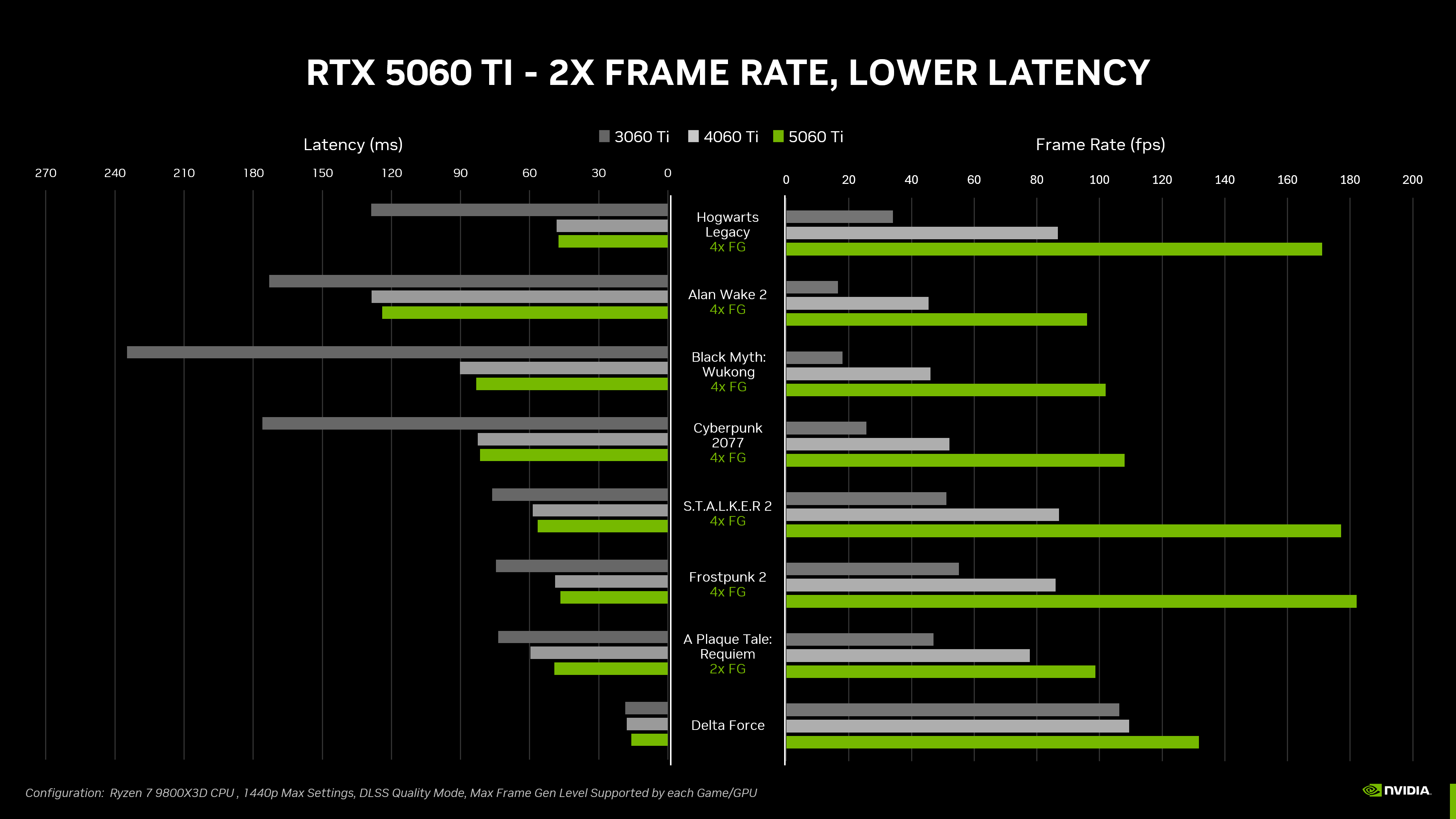One of the things PC users enjoy most about their platform is the ability to upgrade components to keep up with the demands of the latest software titles, or to improve work-related computing jobs.
The problem is how much better a new component can be hard to quantify, which is why we often get generational improvements expressed as percentages—to everyone’s detriment.
The illusion of the impressive percentage
If I told you a new graphics card was 20% faster than your current one in your favorite game, that might sound instantly impressive—which is the point! However, if that means going from 60 frames per second to 72 frames per second, would you even notice? Likewise, if it means having 20% more resolution without losing performance, or 20% more on the graphics details sliders, could you perceive the difference?
Why percentages distort perception
A percentage is a number that objectively tells you the magnitude of the improvement when comparing the performance of two components, but it tells you nothing about the experience of using the new component compared to the old one.
A 33% performance increase from 30fps to 40fps has a massive impact on how smooth something looks and feels. Going from 100fps to 133fps is something most regular people won’t even pick up by eye or feel. Obviously, describing both of these with the same number is technically correct, but practically very different.
This also matters because the test scenario changes the context of the numbers. Whether you’re looking at CPUs, GPUs, RAM, or storage, marketers tend to choose very specific comparisons and test settings that will yield the biggest percentage increases for their bar charts.
The real metric: Time saved or frames gained
When you’re looking at spending a stack of cash on a new component or an entire new computer, you need to look at the real-world context of what you’re getting. In general, there are only two things that matter: how much time you’ll save and how much better something will perform.
Take rendering a video project, or a 3D model, or crunching a dataset as examples of things people do with their computers. If your project goes from taking five minutes to render to 2.5 minutes, that’s a doubling of performance. However, how much difference does that make to you? For some people, where every minute has a monetary value, that improvement can be a game-changer. For others, finishing in half the time doesn’t make any difference to their workflow.
Now, that’s a pretty extreme example, since most upgrades are more in line with a 20% or 30% improvement at the high end, but either way, the percentage is meaningless without a real-world context. Basically, is the time you save worth more than the money you spend on getting the upgrade? If the answer to that question is “no”, then the upgrade probably isn’t worth it.
Likewise, in the world of PC video games, there’s been a bit of a plateau when it comes to visuals and performance. Personally, I don’t experience frame rate increases above 60fps as particularly dramatic, and going above 120fps doesn’t do much for me at all. I’m also not particularly sensitive to the difference between 1440p and 4K on a desktop monitor either. If that’s not the case for you, that’s, of course, perfectly fine, though it can turn out to be a rather expensive affliction!
Small numbers, big marketing
While things might change, as I write this we’re heading for various brick walls when it comes to further improvements to processor performance. Nodes can only shrink so much, clock speeds can only go so high, and as you approach those limits it gets harder and harder to squeeze out more performance. Add to this that current components already have stupendous processing power in absolute terms, so a 5% or 10% increase actually represents a whole lot of extra compute, but not necessarily lots of extra performance on the tasks you’re already doing.
The people who have to sell you these components will grasp at any number that makes a new CPU or GPU look as good as possible, and “it’s 15% faster” looks way better than “it saves you 20 seconds of render time.”
Focus on experience, not arithmetic
This is all just a long-winded way to say that you shouldn’t take percentages very seriously at all when talking about how much better a new thing is than an old thing. Setting aside whether the new thing does new things, which is a different discussion, if it’s just more of the same but faster, then you must take a step back and think about the real world implications of those numbers.
With the cost of modern hardware going through the roof, and everyone doing their best to convince you that you need to part with your hard-earned money, it’s easy to get caught up in the hype, only to realize that, after spending all that dough, your actual experience of work or playing hasn’t actually changed at all.


